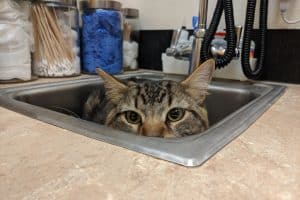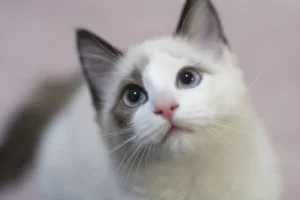Cats are often beloved members of the family, providing companionship and comfort. However, in some cases, difficult decisions may need to be made regarding their well-being.
In this blog post, we will explore the reasons why cats may be put down, shedding light on this sensitive topic without shying away from the difficult truths. Let’s dive into the complex reasons behind this heartbreaking decision.
Medical Reasons
When it comes to medical reasons that may lead to the difficult decision to put a cat down, it’s crucial to consider the quality of life of our feline friends. Terminal illnesses, such as advanced cancer or organ failure, can cause unbearable pain and suffering for a cat. In such cases, euthanasia is often chosen as a compassionate option to prevent further distress and ensure a peaceful passing.
Additionally, severe injuries that can’t be effectively treated or that would result in a lifetime of pain and disability may also lead to the decision to put a cat down. While it’s never an easy choice to make, sometimes it’s the most humane decision we can make for our beloved pets.
In these situations, consulting with a trusted veterinarian is key to make an informed decision. They can provide guidance on the prognosis, treatment options, and potential outcomes, helping you make the best choice for your cat’s well-being.
Here are some key factors to consider when assessing whether medical reasons warrant euthanasia for your cat: – Pain Management: Is the cat in severe and unmanageable pain? – Quality of Life: Will the cat’s quality of life significantly decrease due to the illness or injury? – Prognosis: What are the chances of recovery or improvement with treatment? – Suffering: Is the cat suffering greatly and unable to enjoy normal activities? – Long-Term Care: Can the cat be realistically cared for in the long term, both physically and financially?
Considering these aspects can help you make a well-informed decision that prioritizes your cat’s comfort and well-being.
Behavioral Issues
Behavioral issues can also be a challenging factor that may lead to the difficult decision to euthanize a cat. While many behavioral problems can be managed with proper training and behavior modification techniques, some issues may be severe and persistent, impacting the cat’s quality of life and safety.
Severe aggression towards humans or other pets, especially if it poses a danger to family members or visitors, can be a serious concern. In such cases, rehoming may not be a viable option, and euthanasia might be considered to prevent harm to others.
Similarly, uncontrollable spraying or marking behavior, especially in multi-cat households, can create a stressful environment for everyone involved. Despite efforts to address the behavior through environmental enrichment and medical interventions, some cases may not show improvement, leading to difficult decisions.
When faced with behavioral issues that may warrant euthanasia, seeking guidance from a certified animal behaviorist or veterinarian specializing in behavior can provide valuable insights and potential solutions. It’s essential to explore all available options before making a final decision, ensuring that the cat’s welfare and safety are the top priorities.
Quality of Life
Making the decision to put down a cat is never easy, but it is sometimes the most humane choice to prevent unnecessary suffering. When considering a cat’s quality of life, factors such as pain, distress, discomfort, inability to engage in normal behaviors, and loss of appetite need to be carefully evaluated. It’s crucial to prioritize the cat’s well-being above all else, ensuring that they are not experiencing prolonged pain or distress without hope of improvement. Veterinarians will assess the cat’s condition and provide guidance on whether euthanasia is the most compassionate option.
Financial Considerations
Unfortunately, financial constraints can also play a significant role in the decision to put a cat down. Medical treatments for conditions such as cancer, chronic diseases, or severe injuries can be costly, and not all pet owners have the means to afford these expenses. When faced with exorbitant medical bills, some owners may have to make the heartbreaking choice to euthanize their cat due to financial limitations. It’s essential for pet owners to consider their financial situation realistically and explore all possible options, such as pet insurance or payment plans, to ensure the best outcome for their furry companion.
Additional Unique Insight:
Seeking Support: It’s essential for pet owners facing the decision to put down their cat to seek emotional support from friends, family, or even professional counselors. Dealing with the loss of a beloved pet can be incredibly challenging, and having a strong support system in place can help navigate this difficult time with more ease and understanding. Remember, you’re not alone in this journey.
Shelter Overcrowding
Shelters often face the difficult reality of overcrowding, forcing them to make tough decisions about which animals to euthanize. Limited space and resources can lead to cats being put down, especially if they have been in the shelter for an extended period without being adopted. This heartbreaking situation highlights the importance of spaying and neutering pets to help reduce the number of homeless animals in need of shelter and prevent overcrowding issues.
Emotional Toll
Deciding to put a cat down can take a heavy emotional toll on pet owners. Feelings of guilt, grief, and heartache are common as individuals grapple with the difficult decision to end their pet’s suffering. It’s crucial for pet owners to seek support from friends, family, or even a professional counselor to navigate through these challenging emotions and process their grief in a healthy way.
Tips for Coping with the Loss of a Pet:
- Create a memorial: Plant a tree, create a photo album, or donate to an animal charity in your cat’s honor.
- Seek support: Join a support group or online forum to connect with others who have experienced pet loss.
- Practice self-care: Take time to grieve, eat well, exercise, and get plenty of rest to support your mental and emotional wellbeing.
- Consider getting a new pet: While it may not replace your lost cat, adopting a new pet can provide love and companionship during a difficult time.
Alternatives to Euthanasia
When faced with the difficult decision of whether to put a cat down, it’s essential to explore all available options. Hospice care can provide a comfortable and compassionate alternative to euthanasia, allowing your cat to live out their remaining time with dignity and love. This option focuses on pain management and quality of life, ensuring your feline friend receives the care they deserve in their final days.
Another alternative worth considering is rehoming. If your cat’s behavior or health issues are too much to handle, finding a new loving home where they can thrive might be the best solution. Organizations and shelters often provide assistance in this process, ensuring your cat finds a suitable and caring environment.
While euthanasia may sometimes be necessary for a cat’s well-being, exploring these alternatives can offer a more compassionate and thoughtful approach to end-of-life decisions for your beloved pet.
Supporting Pet Owners
Making the decision to put a cat down is never easy, and pet owners need all the support they can get during this challenging time. Therapeutic options such as grief counseling and support groups can provide comfort and guidance as you navigate this emotional journey. Talking to others who have gone through a similar experience can be incredibly helpful in coping with the loss of a beloved pet.
Additionally, counseling services specializing in pet loss can offer professional guidance and support tailored to your unique needs. These services can help you process your feelings, make sense of your emotions, and find healthy ways to cope with the grief of losing a furry family member.
Remember, you are not alone in this decision, and seeking support from various resources can help you navigate this difficult time with compassion and understanding.
Fun Fact About Cats
Did you know that cats have a special reflective layer behind their retinas called the tapetum lucidum? This layer enhances their night vision, allowing them to see in light levels six times lower than what a human needs. Next time your cat stares at you in the dark, they might actually see you much clearer than you think!
Why are Cats Put Down?
Unfortunately, cats may sometimes be put down due to severe illness or injury that cannot be effectively treated, causing suffering and reducing their quality of life. In some cases, aggressive behavior or significant behavioral issues that pose a risk to the cat’s owners or others may also lead to the difficult decision to euthanize the cat. It’s a tough choice, but often the most humane one to prevent further suffering.
Additional Unique Insight:
One important consideration when contemplating euthanasia for a cat is to consult with a veterinarian to explore all possible treatment options and assess the cat’s quality of life accurately. Veterinarians can provide valuable insights and guidance to help pet owners make the most informed decision for their beloved feline friend.
Remember, it’s a challenging decision to make, but ensuring the cat’s well-being and preventing unnecessary suffering should always be the top priority.
Alex, a passionate animal lover, has experience in training and understanding animal behavior. As a proud pet parent to two dogs and three cats, he founded AnimalReport.net to share insights from animal experts and expand his knowledge of the animal kingdom.









